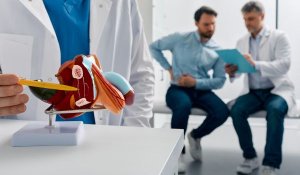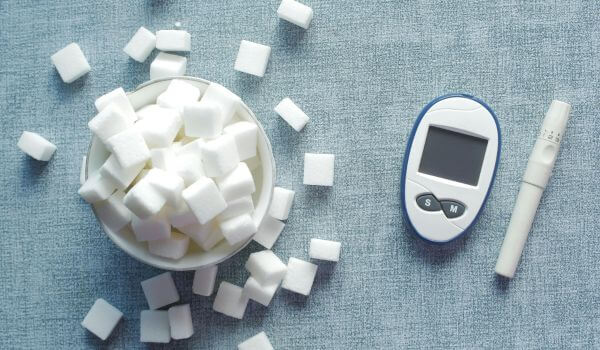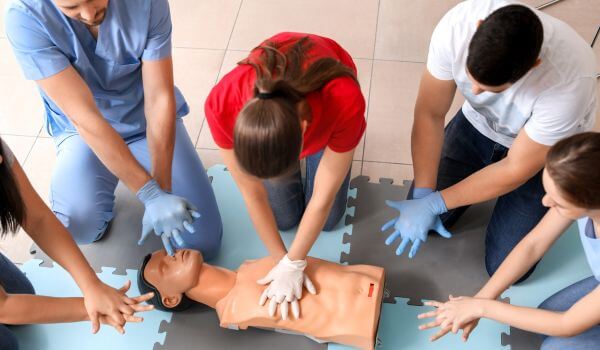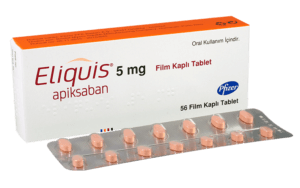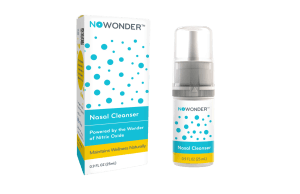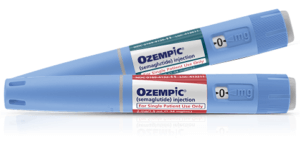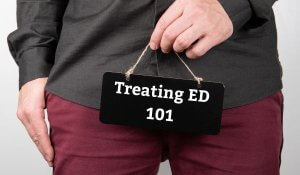 Treatment for men who are experiencing erectile dysfunction and failing to get a satisfactory erection in sexual activity has gone through a few substantial upgrades over the past thirty years. In the past, the condition was regarded as a sign of impotence and weakness, and admitting to erectile dysfunction (ED) was a matter of shame. Men were reluctant to discuss their problems with anyone, even trained medical specialists such as urologists and proctologists who dealt with other such “private matters.” The change came when, in an unforeseen way, a drug that was being tested to treat a heart condition turned out to be producing strong erections in the candidates, many of whom were middle-aged men who had never spoken about difficulties in the bedroom, but were rejoicing in their newfound abilities.
Treatment for men who are experiencing erectile dysfunction and failing to get a satisfactory erection in sexual activity has gone through a few substantial upgrades over the past thirty years. In the past, the condition was regarded as a sign of impotence and weakness, and admitting to erectile dysfunction (ED) was a matter of shame. Men were reluctant to discuss their problems with anyone, even trained medical specialists such as urologists and proctologists who dealt with other such “private matters.” The change came when, in an unforeseen way, a drug that was being tested to treat a heart condition turned out to be producing strong erections in the candidates, many of whom were middle-aged men who had never spoken about difficulties in the bedroom, but were rejoicing in their newfound abilities.
What is erectile dysfunction?
ED is the inability of a man to achieve or maintain a satisfactory erection good enough for sexual intercourse from arousal through to orgasm. However, there are possible symptoms when experiencing erectile dysfunction, which may include:
- Difficulty getting an erection
- Loss of spontaneous erections
- Difficulty maintaining a full erection through to orgasm.
It is a common condition that can affect men of all ages, but the likelihood of experiencing erectile dysfunction increases with age. A recent article published on the Medscape professional website, which serves as a reference source for healthcare professionals, outlined all of the technical details that constitute a satisfactory erection, and I will try to put all of this information together in a way that everyone can understand and learn from.
It’s important to understand that ED is not a failure or weakness of yourself as a man. In almost all cases, it is caused by real disorders or even diseases, so in every sense, ED is not something to be ashamed of, especially if that is stopping you from talking to your doctor.
Available treatments for Erectile Dysfunction
The main treatment options for ED include:
- Lifestyle changes: Making healthy lifestyle choices, such as exercising regularly and not smoking, can help you to achieve a satisfactory erection when required.
- Medications have been around for nearly 15 years, all based on the same form of oral medication called phosphodiesterase 5 (PDE-5) inhibitors. These have the advantage of being available in a wide range of tablet strengths, meaning it’s easier to get the right dose with trials. Examples of these are:
| Drug name | Features |
| Cialis (tadalafil) | Works longer than all other PDE5 drugs (up to 36 hours), which means multiple dosing is not needed. Is taken half an hour before sex (when needed), or can be taken daily. |
| Viagra (sildenafil) | Starts working within 30 to 60 minutes of taking the medication and its effects last up to 4 hours. Shouldn’t be taken more than once a day, or 3 times a week. |
| Levitra (vardenafil) | Starts working one hour after taking, and will promote a satisfactory erection that lasts for five hours. |
| Stendra (avanafil) | Newest PDE5 drug. It starts to work within 15 minutes and effects last for up to six hours. |
We now offer single-strength forms of Viagra and Cialis in over-the-counter packs, so a doctor’s prescription isn’t required.
If low testosterone levels are interfering with the workings of PDF5 medications, testosterone replacement therapy can be used to improve their effect. It can be delivered in a variety of methods, including creams such as AndroForte, injections, patches, and pellets. General health and good nutrition are also very important when it comes to sexual health. Maintaining a healthy weight and staying fit are essential for achieving optimal performance. For men, simple dietary supplements that directly address aspects of hormones and metabolism, such as the Men’s Hormone Support Pack (supplying testosterone boosters) and His Essentials Pack (packed with vitamins, minerals and an adaptogen that enhances stamina and strength) may contribute to improved mood, cognitive performance, and hormonal balance.
Summary
We hope you learned a bit more about erectile dysfunction – at least enough to be able to talk confidently with a healthcare adviser about getting a solution if you have a problem like this. The main points to take away are:
- ED is a common disorder, shared by millions of men, and is not some weakness you should be afraid or ashamed to talk about with your doctor.
- ED can point to other possibly serious underlying conditions. Failure to discuss your whole health picture could lead to serious consequences later on.
- There are several ways to improve your sexual performance. Some of these are easy treatments, such as oral medications and creams, while others may be a bit more radical, but will still, in the end, address your problem.
Questions people ask about erectile dysfunction
What are the possible physical causes of Erectile Dysfunction? 
The main causes differ by age. Studies have shown that the incidence of ED actually falls between the ages of 18-24 (17%) and 35-44 (12%). Doctors attribute this mainly to psychological and lifestyle changes. Younger men may still have a sense of insecurity about their sexual profile, and this transforms into stress and anxiety in their relationships. In most of these cases, the problems with erections are transient and clear up as the younger men mature. Another cause in younger men is their lifestyle. Heavy drinking and recreational drug use have a direct impact on sexual performance, and the longer that goes on, the more direct the resultant effect. In most cases, as men mature, settle down in their work and family lives, they will taper off their consumption of alcohol and drugs, and can return to more normal behavior in their sexual functions.
Some physical causes of ED in older men include pre-existing chronic conditions, most notably :
- Cardiovascular disease
- Diabetes
- Hormonal imbalance
- Prior surgical interventions (for prostate cancer)
- Hyperlipidemia (high cholesterol)
- Obesity
- Hypertension (high blood pressure)
Doctors can use complaints of erectile dysfunction as a pointer to undetected systemic conditions like these, so ED may serve as a marker for medical conditions in need of treatment. However, whatever the cause, ED can have strong negative effects on a patient’s self-esteem, relationships, and overall quality of life, so it should be attended to with the same level of attention as any other condition. It is also important to remember that ED can occur at any age and is not to be viewed as a normal part of aging.
Are there any psychological triggers for Erectile Dysfunction?

What’s going on when erections are working?
A full sexual response cycle for a male typically goes through four major phases, and failure to achieve all four would be defined as erectile dysfunction:
- Desire
- Arousal and erection
- Orgasm and ejaculation
- Relaxation.
Getting and keeping an erection isn’t just about what’s happening in the penis. It also involves the nerves, blood vessels, and chemical signals throughout the body.
The role of nerves and blood flow
When a man is sexually aroused, signals from the brain travel down to nerves in the lower spine. These nerves help release neurotransmitters that flood the muscles in the walls of the penis with muscle relaxants (muscle-relaxing chemicals, such as cGMP and cyclic adenosine monophosphate – cAMP). This allows the penis to relax and makes it easier for blood to rush into the hollow penis.
As the blood flows in, the penis gets firm and begins to swell. At the same time, the veins that normally carry blood out of the penis are squeezed shut (the bulbocavernous reflex.) This traps the blood inside the chambers of the penis and starts to create an erection. When the pressure inside the penis gets high enough, the erection becomes hard and full.
With continued sexual stimulation, muscles at the base of the penis squeeze even harder, pushing more blood in. This can raise the pressure even more, making the erection very firm. At this point, both the inflow and outflow of blood slow or stop temporarily.
After ejaculation, or if the arousal stops, the body breaks down the chemicals that caused the erection. The veins open back up, the blood flows out, and the penis becomes soft again. These phases are a combination of psychological and physical changes, with the body and the mind working together.
The role of testosterone in achieving erections
Testosterone is the main male hormone. It’s involved in things like mood, energy, muscle mass, bone strength, and sex drive. As men get older, their testosterone levels gradually go down. About 40% of men over 45 have testosterone levels so low that its a condition on its own (called hypogonadism) whether or not it’s associated with ED.
Low testosterone can lead to problems like:
- Lower sex drive
- Weaker or fewer erections
- Trouble with orgasm or ejaculation
- Less sexual activity.
But low testosterone and erectile dysfunction (ED) aren’t always linked. Some men have low testosterone and no erection problems and vice versa. Frequently, men have both issues at once.
How is erectile dysfunction diagnosed?
The subject of sexual performance is sensitive, and any discussion with a partner or healthcare provider would require a man to feel comfortable talking about such highly personal and intimate matters. As well, older men who are not very sexually active feel erectile inadequacy as a matter of their aging and don’t refer to a doctor for help, so their ED remains undetected.
The way that the problem of privacy has been addressed is to develop a patient questionnaire, known as the IIEF-5 test, which is used to measure various aspects of erectile performance. The IIEF-5 is a shortened version of the International Index of Erectile Function. It can be downloaded onto mobile devices and can be used to detect the presence of ED and calculate the degree of severity. The questionnaire is a multi-dimensional self-report that evaluates male sexual function. It has been designed to be evaluated by doctors who have been consulted because of a self-diagnosis of ED.
How many men are affected by erectile dysfunction?
According to the National Institute of Diabetes and Digestive and Kidney Diseases (NIDDK), an estimated 18 million men in the United States alone are experiencing erectile dysfunction. This number is expected to rise as the population ages, with estimates suggesting that up to 30 million men in the US may be experiencing ED in 2025.
Another reference website showed a pattern of increasing incidence of the problem, where it jumped from just over one quarter of men between the ages of 45 and 54, to over one-third of all men aged 55 and older.
It’s important to come away from these lessons with a sense that ED is not some failure or weakness of yourself as a man. In almost all cases, it is caused by real disorders or even diseases, so in that sense, ED is not something to be ashamed of, especially if that is deterring you from talking to your doctor.
Can testosterone supplementation help with ED?
There are some encouraging results from tests. About 35-40% of men with low testosterone see better erections after getting testosterone therapy. Some studies show that men experiencing erectile dysfunction who have normal testosterone levels get better results from using ED medications like sildenafil. In one study, men who didn’t respond to sildenafil started testosterone treatment and later showed better erections. Androgel is an ointment for men 18 years old or older with a deficiency or absence of testosterone due to primary or hypogonadotropic hypogonadism.

